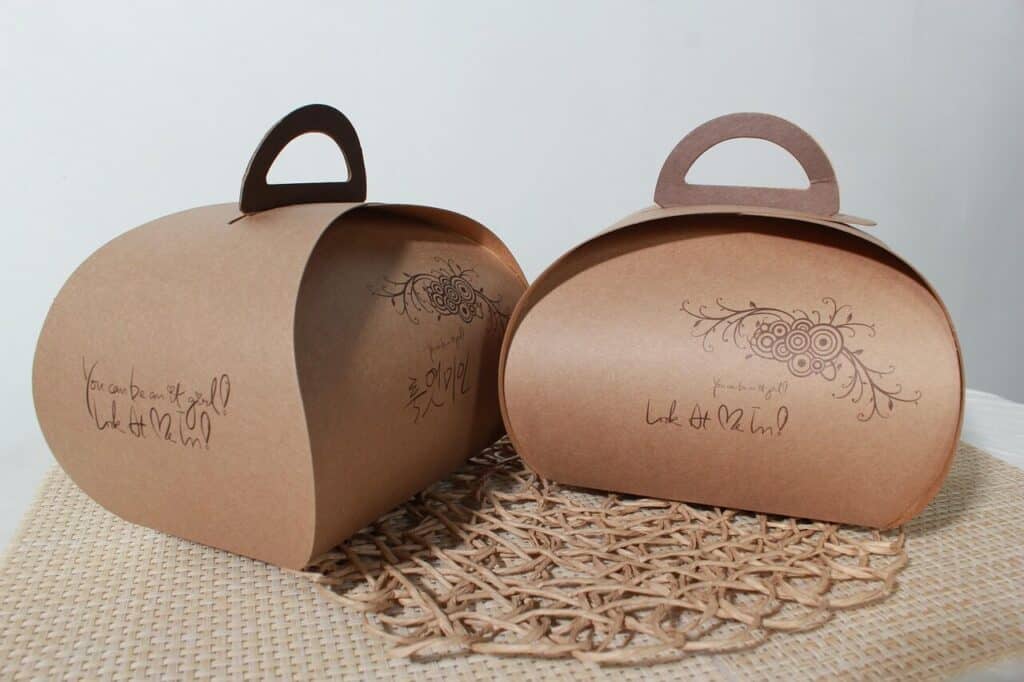L'ingénierie de l'emballage de coussins : Une analyse technique approfondie de la technologie de l'emballage en flux
Au-delà de l'emballage de base
L'emballage en coussins est une méthode clé du système HFFS (Horizontal Form-Fill-Seal). C'est l'épine dorsale de l'emballage automatisé moderne. Cette technologie crée les emballages scellés que nous voyons partout, des barres chocolatées aux produits de boulangerie, en passant par les appareils médicaux et les kits de matériel.
Nombreux Les guides expliquent le processus de base. Cette analyse va plus loin. Nous allons décomposer la machine à emballer les coussins, ou flow wrapper, en ses différents éléments. systèmes d'ingénierie de base. Nous nous concentrons sur le “comment” et le “pourquoi” de son fonctionnement à grande vitesse et avec précision.
Cette étude technique approfondie examine les quatre piliers suivants enveloppement des flux technologie :
- Le système d'alimentation et de manutention des produits.
- L'ensemble de manipulation, de tension et de formation du film.
- Les unités de scellage et de coupe longitudinales et transversales.
- Le système de contrôle électronique, y compris les PLC, les servomoteurs et les IHM.
La compréhension de ces sous-systèmes permet aux ingénieurs et aux techniciens d'optimiser les performances. Ils peuvent dépanner plus efficacement et de prendre de meilleures décisions concernant les machines sélection et fonctionnement.
La séquence HFFS
L'ensemble du processus d'emballage des oreillers est une séquence synchronisée de trois actions : le formage, le remplissage et le scellement. Vous devez comprendre ce flux linéaire avant d'analyser les composants individuels responsables de chaque étape.
1. Formation du tube
Le processus commence par un rouleau plat de film d'emballage. Le film est tiré d'une broche et guidé par des rouleaux qui maintiennent la tension.
Il entre ensuite dans un élément critique appelé “boîte de formage” ou “charrue”. Ce guide métallique façonné plie la bande de film plate autour de lui-même. Cela crée un tube continu et ouvert. Les deux bords extérieurs du film se rejoignent en bas, prêts pour la première opération de scellage.
2. Remplissage et scellement longitudinal
Au fur et à mesure que le tube de film se forme, les produits y sont introduits par un convoyeur d'alimentation à cadence précise. Les Les produits sont espacés de manière cohérente. intervalle, ou pas, à l'intérieur du tube continu.
En même temps, les bords superposés du film passent par des roues ou des courroies chauffées. C'est l'unité de soudure longitudinale, qui crée la “soudure à ailettes” sur toute la longueur de l'emballage. Cette soudure continue transforme le film plié en un véritable tube, enfermant le contenu de l'emballage. gamme de produits.
3. Scellement et découpe transversale
L'étape finale utilise un ensemble de mâchoires rotatives ou à mouvement alternatif. C'est ce qu'on appelle l'unité de scellement transversale ou finale. Cet ensemble travaille avec une grande précision.
Les mâchoires serrent le film dans l'espace entre deux produits. Elles effectuent trois actions à la fois. Elles scellent l'extrémité arrière de l'emballage de tête, scellent l'extrémité avant de l'emballage suivant et coupent le film entre les deux scellés. Cette action sépare le paquet “oreiller” individuel fini de la bande continue.
Analyse des systèmes mécaniques
Une enveloppeuse de flux est un système d'assemblages mécaniques interconnectés. Chacun d'entre eux a une fonction technique spécifique. Les performances ne sont élevées que lorsque ces systèmes sont correctement configurés et parfaitement synchronisés.
Convoyeur d'alimentation Précision
Le convoyeur d'alimentation ne se contente pas de transporter des produits. Sa fonction première est d'assurer un espacement et une synchronisation précis. Il garantit que chaque produit arrive au tube de formage au moment exact requis par la séquence d'emballage.
La plupart des alimentations utilisent des “volées” ou des “ergots”. Il s'agit de poussoirs régulièrement espacés sur une chaîne qui maintiennent un pas de produit constant. Ce pas est un paramètre critique de la machine. Il détermine la longueur du sac et doit être parfaitement synchronisé avec la rotation des mâchoires de fermeture.
La vitesse du convoyeur n'est pas indépendante. Elle est électroniquement adaptée à la vitesse du film et au cycle de la mâchoire. Cela permet de s'assurer qu'un produit est positionné pour chaque longueur de film du sac qui est alimenté. Tout décalage se traduit par des sacs vides ou des produits écrasés dans les soudures finales.
Alimentation et formation des films
Le parcours du film d'un rouleau plat à un tube formé est régi par la tension et la géométrie. Le système d'alimentation et de formage du film est la base d'un bon emballage.
Ce système comporte deux parties essentielles. Le premier est le déroulement du film et le contrôle de la tension. Il commence par le support de rouleau de film, ou broche, qui comprend souvent un système de freinage. Lorsque le film est tiré, il passe sur un “bras danseur” - un rouleau pondéré et pivotant. Ce bras fournit un retour d'information au frein, ce qui permet de maintenir une tension constante sur le film. Sans ce système, le film peut glisser pendant l'alimentation, ce qui entraîne des longueurs de sac irrégulières. Il peut également s'étirer, ce qui entraîne des erreurs de repérage sur le film imprimé.
La deuxième zone est la boîte de formage. Cet outil façonne physiquement le film plat en un tube. Ses parois latérales, sa partie supérieure et sa partie inférieure sont réglables pour s'adapter aux différentes largeurs et hauteurs de produit. Une boîte de formage mal réglée est une source fréquente de problèmes. Elle entraîne des soudures de biais, des plis ou des paquets trop serrés ou trop lâches autour du produit.
Mâchoires d'étanchéité et de coupe
Les mâchoires de scellage et de coupe constituent le cœur de la machine. C'est là que l'emballage final est créé et sécurisé. Leur efficacité dépend d'un équilibre précis entre la température, la pression et le temps.
L'unité de scellage longitudinal, ou scellage des ailettes, se compose généralement de deux ou trois paires de rouleaux chauffés. Ces rouleaux appliquent de la chaleur et de la pression sur les bords du film qui se chevauchent. Le principe fondamental qui régit cette action est la relation entre la température, la pression et le temps d'attente (TPD). Le film doit être maintenu à la bonne température et à la bonne pression juste assez longtemps pour que les couches de mastic fondent et fusionnent.
L'unité transversale de scellage et de coupe assure la double fonction de scellage et de séparation des extrémités. Les faces des mâchoires sont dentelées. Ceux-ci ne transfèrent pas seulement la chaleur, mais sertissent également les couches de film pour créer un scellage solide, souvent pelable. Un couteau est emboîté dans l'une des mâchoires. Lorsque les mâchoires se ferment et se scellent, le couteau se déploie pour couper le film.
Une erreur opérationnelle courante consiste à régler la température des mâchoires à un niveau trop élevé pour une vitesse de film donnée. Cela peut entraîner la fonte du film et son accumulation sur les mâchoires. Les emballages suivants collent alors et se déchirent, ce qui entraîne les arrêts de machines et les produits déchets.
Le cerveau de la machine
Les machines d'emballage d'oreillers modernes atteignent leur vitesse, leur précision et leur flexibilité remarquables grâce à un système de contrôle électronique sophistiqué. Ce “cerveau” synchronise toutes les actions mécaniques.
L'ordinateur central est le PLC (Programmable Logic Controller). Il exécute en permanence un programme qui lit les entrées des capteurs. Il s'agit notamment d'yeux photographiques pour le repérage de l'impression et d'encodeurs pour la position. Il envoie des commandes de sortie à des actionneurs tels que des chauffages, des solénoïdes et des moteurs. L'automate est le décideur ultime, il exécute la logique de la machine.
Les servomoteurs sont au cœur du contrôle des mouvements. Contrairement aux anciens systèmes mécaniques à came ou à embrayage/frein, les servomoteurs offrent un contrôle précis, défini par logiciel, de la position, de la vitesse et du couple. Cela permet des changements rapides et reproductibles.
Les servomoteurs sont directement responsables des mouvements synchronisés les plus critiques de la machine. Un servo sur le convoyeur d'alimentation contrôle le pas du produit. Un servo sur les rouleaux d'entraînement du film contrôle la longueur exacte du sac. Cela permet des fonctions telles que “pas de produit, pas de sac” pour éviter les emballages vides. Un servo sur les mâchoires de scellage contrôle leur vitesse de rotation et leur phase par rapport au produit.
L'opérateur interagit avec ce système par l'intermédiaire de l'IHM (interface homme-machine), généralement un écran tactile. L'IHM est le tableau de bord de la machine. L'opérateur peut y régler tous les paramètres clés tels que la longueur du sac, les températures de soudure et la vitesse globale de la machine. Plus important encore, l'IHM est utilisée pour stocker des “recettes” pour différents produits. Cela permet de changer complètement de machine en appuyant sur quelques boutons. Elle fournit également des informations de diagnostic essentielles, en affichant les alarmes et en indiquant aux techniciens la source d'une panne.
Architectures comparées
L'un des principaux facteurs de différenciation technique entre les machines d'emballage de flux est le système mécanique. conception du système de mâchoires d'étanchéité. Le mouvement des mâchoires détermine la vitesse de la machine, la qualité du scellage et l'adaptation à différents produits et films. Il existe trois architectures principales.
Les mâchoires rotatives offrent la vitesse la plus élevée. Les mâchoires tournent dans un mouvement circulaire continu, établissant un bref contact tangentiel avec le film.
Les mâchoires à mouvement en boîte se déplacent sur une trajectoire rectangulaire en forme de “boîte”. Elles se déplacent vers le bas pour serrer le film, se déplacent horizontalement avec le film pour augmenter le temps de soudure, puis se rétractent vers le haut et reviennent à leur position initiale.
Les systèmes à longue durée de vie sont une variante du mouvement de la boîte, conçue pour une durée de scellage la plus longue possible. Les mâchoires suivent le produit horizontalement sur une longue distance. Ils sont donc idéaux pour les applications nécessitant des joints hermétiques garantis.
Tableau 1 : Comparaison technique des systèmes de mâchoires d'obturation
Fonctionnalité | Mors rotatifs | Box Motion Les Dents de la mer | Mâchoires à longue durée de vie |
Mouvement mécanique | Mouvement rotatif continu | Mouvement vertical et horizontal (forme une “boîte”) | Suit le produit horizontalement pendant une période prolongée |
Temps de scellement | Contact court et tangentiel | Pression directe plus longue | Pression continue la plus longue |
Vitesse maximale | Très élevé (jusqu'à 1000 ppm) | Moyenne à élevée (jusqu'à 150 ppm) | Moyen |
Qualité des scellés | Bon pour les films standard | Excellent ; permet une meilleure pénétration de la chaleur pour les films plus épais | Supérieure ; idéale pour les joints hermétiques/MAP |
Manipulation des produits | Idéal pour les produits de petite taille, stables et légers | Polyvalent ; idéal pour les produits plus grands, plus lourds ou délicats | Idéal pour les joints d'étanchéité de haute intégrité requis dans le domaine médical ou des aliments frais |
Application primaire | Confiserie, biscuits, snacks | Emballages multiples, produits frais, produits de boulangerie | Emballage sous atmosphère modifiée (MAP), dispositifs médicaux |
Interaction entre le film et la machine
Les performances d'une enveloppeuse sont directement liées aux propriétés du film d'emballage utilisé. La machine est un système thermomécanique et le film est le matériau sur lequel elle travaille. Comprendre le matériau La science est essentielle pour la technique la maîtrise.
L'interaction est dictée par plusieurs propriétés clés du film. Ces propriétés déterminent les réglages nécessaires de la machine en termes de température, de pression et de vitesse. Un film qui fonctionne bien sur une machine peut échouer sur une autre si ces réglages ne sont pas adaptés à sa spécificité. caractéristiques.
Tableau 2 : Propriétés clés des films et leur impact technique
Propriété du film | Description | Impact sur le processus d'emballage des oreillers | Matériaux communs |
Couche d'étanchéité | La couche interne du film qui fond sous l'effet de la chaleur. la chaleur et la pression pour former le joint. | Détermine la température de scellage et le temps d'attente nécessaires. Une SIT (Seal Initiation Temperature) basse permet des vitesses plus élevées. | PE, Ionomères (par exemple, Surlyn) |
Coefficient de frottement (CoF) | Le caractère “glissant” de la surface du film. | Un faible coefficient de frottement est essentiel pour assurer un déplacement en douceur sur la boîte de formage et le banc de la machine. Un CoF élevé peut entraîner une traînée et un étirement du film. | Varie selon le film ; souvent contrôlé par des additifs de glissement. |
Rigidité / Module | La rigidité du film. | Les films plus rigides passent mieux dans la machine mais peuvent être plus difficiles à former. Les films mous peuvent être difficiles à contrôler. | La PPO est raide ; la PE est molle. |
Propriétés des barrières (OTR/MVTR) | Taux de transmission de l'oxygène / Taux de transmission de la vapeur d'eau. | Essentiel pour les durée de conservation du produit mais n'affecte pas directement le fonctionnement de la machine. | Les revêtements en PET métallisé, EVOH, AlOx offrent des barrières élevées. |
Il existe une distinction fondamentale entre les films thermoscellés et les films scellés à froid. Les films thermoscellés sont les plus courants. Ils nécessitent des mâchoires chauffées pour faire fondre une couche de scellant polymère.
Les films à soudure à froid, en revanche, utilisent un adhésif cohésif sensible à la pression, pré-appliqué, qui ne colle qu'à lui-même. Ces films sont utilisés sur des machines dont les mâchoires ne sont pas chauffées et qui n'exercent qu'une pression. Ils sont essentiels pour l'emballage de produits sensibles à la chaleur comme le chocolat. Ils n'introduisent pas de chaleur dans le processus, ce qui permet d'atteindre des vitesses très élevées sans risque d'endommager le produit.
Guide de dépannage technique
Un dépannage efficace nécessite une approche systématique de la cause première. Les problèmes sur une ligne d'emballage de coussins sont rarement isolés. Ils sont souvent le symptôme d'un problème dans un système mécanique, matériel ou électronique connexe.
Ce guide fournit un cadre pour le diagnostic des défaillances courantes. Lorsqu'un problème survient, il est essentiel d'analyser les causes potentielles dans les trois domaines. Ne vous concentrez pas uniquement sur le symptôme le plus évident. Par exemple, une longueur de sac incohérente est souvent imputée au film. Mais il peut tout aussi bien s'agir d'un codeur défaillant ou de rouleaux mécaniques usés.
Tableau 3 : Défauts courants des garnitures de coussins et causes techniques profondes
Symptôme / Défaut | Cause mécanique potentielle | Cause matérielle potentielle | Cause potentielle électronique/contrôle |
Mauvais joints d'extrémité (fuites, faiblesse) | Pression insuffisante des mâchoires ; dentelures usées des mâchoires ; mauvais alignement des mâchoires. La première chose à vérifier est la température de scellement. | La couche de scellant du film n'est pas compatible avec la température/vitesse ; le film est trop épais pour le temps de séjour disponible. | Réglage incorrect de la température dans l'IHM ; paramètre de temporisation incorrect (sur les systèmes de mouvement en boîte). |
Longueur de sac incohérente | Courroies/rouleaux de transport de film usés ; pression incorrecte sur les roues de tirage ; glissement mécanique dans la chaîne d'entraînement. | CoF élevé ou irrégulier du film entraînant un glissement ou une traînée sur l'épaulement de formage. | Un servomoteur pour l'alimentation du film peut avoir besoin d'un nouveau réglage ; un encodeur est sale ou défectueux, ce qui entraîne des erreurs de lecture de la course du film. |
Rides du film au niveau du joint d'ailette | Roues de joint d'ailette mal alignées ; pression incorrecte sur les roues (trop élevée) ; boîte de formage trop étroite ou trop large pour le produit. | Le film a une faible rigidité (trop mou) et ne peut pas se soutenir lui-même ; épaisseur du film incohérente (bandes de jauge). | Ce problème est souvent diagnostiqué à tort comme un problème électronique. Vérifier que le frein de déroulement n'est pas animé d'un mouvement “saccadé” qui crée des pics de tension. |
Le film n'est pas suivi de manière centralisée | Le rouleau de film n'est pas centré sur la broche ; la boîte de formage n'est pas centrée sur l'axe de la machine ; le banc de la machine/les rouleaux ne sont pas de niveau. | Le rouleau de film lui-même a été enroulé avec un “télescope” ou présente des bords irréguliers dus au processus de découpage. | N/A (il s'agit presque toujours d'un problème de réglage mécanique ou de matière première). |
Synthèse pour la performance
Une machine à emballer les oreillers est un système complexe et synchronisé. Les performances optimales ne sont pas obtenues par la maîtrise d'un seul composant. Elle résulte de la compréhension de l'interdépendance profonde entre la précision mécanique, la science des matériaux et le contrôle électronique.
La clé pour passer du statut d'opérateur de base à celui de véritable L'expertise technique réside dans la compréhension de ces éléments fondamentaux. principes. Il s'agit de comprendre comment la DPT des mâchoires de scellage est liée à la couche de scellant du film. Il s'agit de savoir comment le CoF du film affecte les performances du servomoteur. Et c'est comprendre comment une boîte de formage mal alignée peut provoquer une cascade de défaillances en aval.
L'évolution de la technologie de l'emballage sous flux se poursuit. L'avenir pointe vers une plus grande intégration avec la robotique pour un chargement et un encaissage entièrement automatisés. Nous assisterons à une adoption plus large des principes de l'industrie 4.0. Des capteurs intelligents fourniront des données en temps réel sur l'usure et les performances des composants, permettant une maintenance prédictive et minimisant davantage les temps d'arrêt. Cependant, même dans ce futur avancé, les principes d'ingénierie fondamentaux analysés ici resteront la base des opérations d'encaissage réussies.
- Packaging World - Principale publication de l'industrie de l'emballage https://www.packworld.com/
- PMMI - Association pour les technologies d'emballage et de traitement https://www.pmmi.org/
- Stratégies d'emballage - Innovation en matière d'emballage des produits alimentaires et des boissons https://www.packagingstrategies.com/
- Packaging Digest - Technologie de l'emballage et meilleures pratiques https://www.packagingdigest.com/
- Association de l'emballage flexible (FPA) https://www.flexpack.org/
- Institut des professionnels de l'emballage (IoPP) https://www.iopp.org/
- ProMach - Solutions d'emballage flexible et HFFS https://www.promach.com/
- Packaging Europe - Innovation européenne en matière d'emballage https://packagingeurope.com/
- ISA - Société internationale d'automatisation https://www.isa.org/
- Technologie et science de l'emballage - Wiley Journal https://onlinelibrary.wiley.com/journal/10991522










